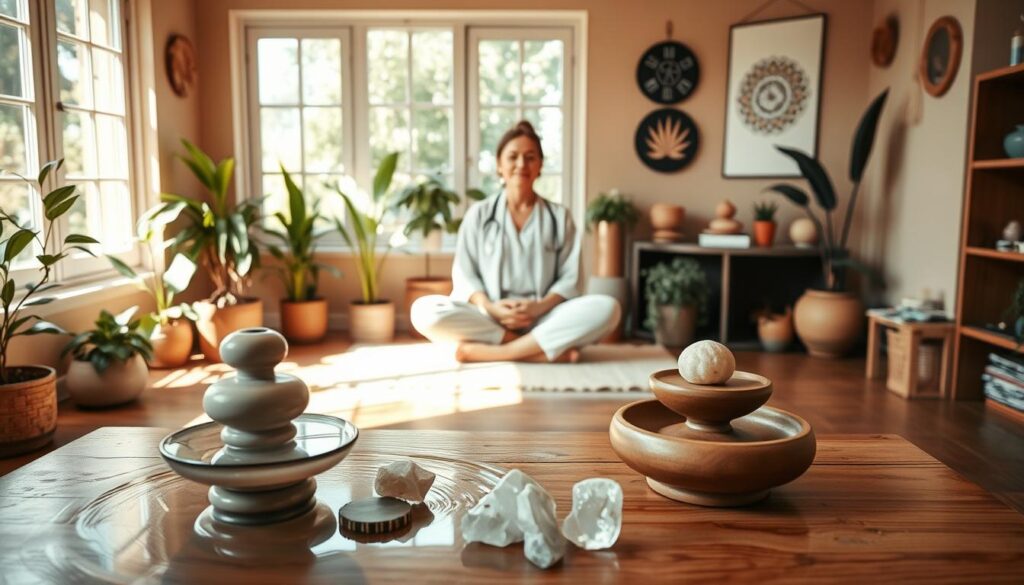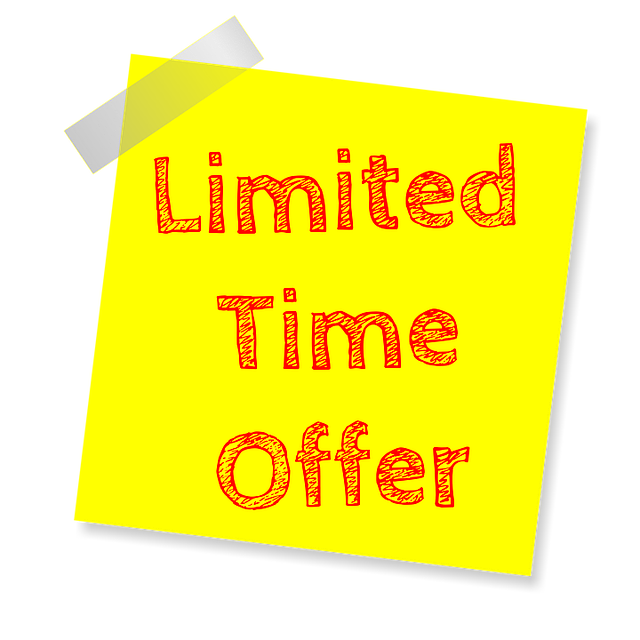Did you know that habits account for approximately 40% of our daily behaviors? This means small, consistent changes can lead to significant transformations in your health and life. The pandemic has sparked a surge in self-awareness, pushing many to seek comprehensive care that integrates mind, body, and spirit1.
Holistic approaches are gaining popularity as they address interconnected dimensions of well-being, from physical to spiritual2. This article is your guide to making these practices part of your daily routine. Whether through mindfulness, exercise, or nurturing relationships, you can start your journey toward balance and harmony.
Real-world success stories show how these methods help people overcome challenges and improve their emotional resilience1. With practical steps and professional support, holistic care is more accessible than ever. Let’s explore how you can transform your life today.
Key Takeaways
- Small daily habits can lead to big changes in your health.
- The pandemic has increased awareness of comprehensive care needs.
- Holistic approaches integrate mind, body, and spirit for balance.
- Mindfulness and exercise are key practices for well-being.
- Professional support makes holistic care accessible to everyone.
What Are Holistic Therapies for Overall Wellness?
Ancient practices have long emphasized the unity of physical and mental health. These methods focus on the interconnectedness of mind, body, and spirit, offering a comprehensive approach to well-being. From ancient Greece to traditional Chinese medicine, these systems have shaped modern healing practices.
Mind, Body, and Spirit Connection
The mind and body are deeply linked. Trauma, for example, can manifest physically, causing symptoms like phantom pains or digestive issues3. Techniques such as breathwork help regulate the nervous system, reducing stress and improving emotional balance3. This connection is central to many healing traditions.
Eastern systems like Ayurveda and traditional Chinese medicine focus on energy flow, such as qi or prana. These contrast with Western models that link psychological states to physical symptoms3. Both approaches highlight the importance of treating the whole person.
Historical Roots and Modern Practice
The foundation of these practices dates back to Hippocrates, who emphasized the balance of mind, body, and spirit3. Ayurveda and traditional Chinese medicine have been used for over 3,000 years, offering integrated healing methods3.
In the West, the 1975 National Conference on Holistic Health helped establish credibility for these methods3. Despite colonial suppression, modern research has validated their benefits, making them more accessible today3. This blend of ancient wisdom and modern science continues to transform lives.
The Science Behind Holistic Healing
Modern science is uncovering the profound benefits of integrating mind and body practices. These methods, once considered alternative, are now supported by robust research. From reducing anxiety to alleviating chronic pain, the evidence is compelling.
Research on Mental Health Benefits
Studies show that mindfulness practices can lower cortisol levels by 14-38%, reducing stress and improving emotional balance3. A 2019 randomized control trial found that a stress management program reduced anxiety and depression by 37% in 230 Indian women3. These findings highlight the power of integrated care for mental health.
Diaphragmatic breathing, for example, improved cognitive function by 22% in a 2017 study3. Such practices not only enhance mental clarity but also regulate the nervous system, offering a natural way to manage symptoms of stress and trauma.
Physical Wellness and Chronic Pain Relief
Chronic pain affects millions, but research offers hope. A 2017 meta-analysis found that meditation reduced pain intensity by 29% and improved depression symptoms3. Acupuncture, another effective method, stimulates endorphin release, providing 50% more migraine relief than standard care3.
Yoga, backed by the NIH, reduces the risk of stroke, heart disease, and diabetes by 27%3. These practices not only address physical symptoms but also promote long-term health.
| Practice | Benefit | Evidence |
|---|---|---|
| Mindfulness | Reduces cortisol levels | 14-38% reduction3 |
| Acupuncture | Migraine relief | 50% more effective3 |
| Yoga | Stroke risk reduction | 27% lower risk3 |
These findings underscore the importance of integrating mind and body practices into daily life. Whether managing anxiety or chronic pain, the evidence is clear: these methods work.
Who Can Benefit from Holistic Therapy?
Nearly 7 in 10 adults in the U.S. have turned to complementary methods to enhance their health4. These practices are particularly effective for those managing autoimmune conditions, chronic fatigue, or treatment-resistant depression. Whether you’re an overwhelmed professional or a chronic pain sufferer, these methods can offer relief and balance.
For patients with cancer, Reiki has shown promise in reducing stress and improving quality of life. However, it’s essential to consult a healthcare provider before starting any new regimen. Similarly, integrating mindfulness with bipolar disorder medications can enhance emotional stability, but abrupt discontinuation of psychiatric medications is strongly discouraged.
Research from Johns Hopkins highlights that yoga can reduce PTSD symptoms by 19%4. This makes it a valuable tool for those recovering from trauma. These practices are not a replacement for traditional medicine but a complementary approach to care.
| Condition | Recommended Practice | Benefit |
|---|---|---|
| Chronic Pain | Yoga | Reduces pain intensity by 29%4 |
| PTSD | Yoga | 19% symptom reduction4 |
| Cancer | Reiki | Improves quality of life |
If you’re considering these methods, start by exploring holistic therapy benefits. Remember, integrating these practices with professional guidance ensures the best outcomes for your health.
Top Holistic Therapies to Explore
Exploring effective methods to enhance well-being can lead to transformative results. From ancient practices to modern techniques, these approaches offer a natural way to improve physical and mental health. Let’s dive into some of the most impactful options available today.
Acupuncture and Traditional Chinese Medicine
Acupuncture, a cornerstone of Traditional Chinese Medicine, targets specific points to restore balance. The P6 acupuncture point, for example, reduces nausea by 44% in chemotherapy patients5. This technique is also effective for headaches, often mapping meridian systems that differ from Western trigger points6.
As part of a broader system, Chinese Medicine emphasizes energy flow and harmony. It’s a powerful complement to conventional treatments, offering relief for various conditions.
Yoga and Meditation for Stress Relief
Yoga combines movement and mindfulness, making it a versatile practice for stress relief. Iyengar Yoga, for instance, improves spinal flexibility by 35% in just 12 weeks5. For anxiety management, Vinyasa flow offers dynamic movement, while Yin Yoga focuses on deep relaxation6.
Meditation, another key practice, reduces cortisol levels and enhances emotional balance. Together, these techniques create a powerful toolkit for managing stress and improving overall health.
Massage Therapy and Bodywork
Massage therapy is a proven method for reducing stress and physical discomfort. Swedish massage, for example, decreases cortisol levels by 31% post-session5. Myofascial release techniques are particularly beneficial for office workers, addressing tension from prolonged sitting6.
These practices not only relax muscles but also promote mental clarity, making them a valuable addition to any wellness routine.
Breathwork and Somatic Practices
Breathwork is a simple yet powerful way to regulate the nervous system. The 4-7-8 breathing protocol, for instance, is highly effective for insomnia relief6. The Wim Hof Method, backed by a 2014 Radboud University study, boosts immune response and enhances resilience5.
These somatic practices connect mind and body, offering a natural way to manage stress and improve well-being.
| Therapy | Benefit | Evidence |
|---|---|---|
| Acupuncture | Reduces nausea | 44% improvement5 |
| Iyengar Yoga | Improves flexibility | 35% increase5 |
| Swedish Massage | Decreases cortisol | 31% reduction5 |
| Wim Hof Method | Boosts immunity | Enhanced response5 |
“The body achieves what the mind believes.”
For more insights into these practices, explore complementary and alternative medicine. Integrating these techniques into your routine can lead to profound improvements in your health and happiness.
How to Incorporate Holistic Practices Daily
Small changes in your daily routine can lead to big improvements in your health and happiness. By integrating simple practices, you can create a balanced and fulfilling life. Let’s explore actionable steps to make these techniques part of your day.
Start your morning with a 5-minute meditation. This reduces workday stress by 41% and sets a calm tone for the day7. Pair it with sun salutations and adaptogenic tea for a complete morning ritual. These small habits can transform your energy and focus.
Design an ergonomic workspace to support your physical health. Add an essential oil diffuser and lumbar support to reduce strain. This setup promotes productivity and comfort throughout the day.
Incorporate mindfulness into your meals. Adjusting meal timing can improve metabolic health markers by 27%7. Focus on mindful chewing and savoring each bite to enhance digestion and satisfaction.
Establish a digital sunset routine. Use blue light-blocking glasses to improve sleep quality. This practice helps your body wind down naturally, preparing you for restful nights.
- Create micro-practices like desk stretches and elevator breathing to stay active.
- Implement a sleep hygiene protocol with magnesium supplements and a weighted blanket.
- End your day with gratitude journaling, which increases sleep quality by 33%7.
These practices are simple yet powerful. By making them part of your daily life, you can achieve balance and well-being. Start small, stay consistent, and watch your life transform.
Finding the Right Holistic Practitioner
Choosing the right practitioner can make all the difference in your health journey. With so many options available, it’s essential to know what to look for and what questions to ask. This guide will help you navigate the process with confidence.

Credentials to Look For
When selecting a provider, credentials are a key indicator of quality. For yoga instructors, a 300+ hour Yoga Alliance certification ensures safety standards8. Licensed acupuncturists must hold NCCAOM certification, which requires 660 clinical hours8. Naturopathic doctors should have CNME accreditation, verifying their program’s quality8.
Always verify state licensing requirements for naturopathic doctors9. This ensures your provider meets local regulations and professional standards. Using the American Holistic Health Association (AHHA) directory can help you find vetted integrative medicine providers9.
| Provider Type | Required Certification | Key Details |
|---|---|---|
| Yoga Instructor | Yoga Alliance (300+ hours) | Ensures safety standards8 |
| Acupuncturist | NCCAOM | 660 clinical hours8 |
| Naturopathic Doctor | CNME | Program accreditation8 |
Questions to Ask During Your Search
Before committing to a provider, ask the right questions. Inquire about their scope of practice and crisis protocols. This helps you understand their approach to care and ensures they align with your needs.
Be cautious of red flags like cure-all claims, supplement upselling, or vague credentials. These can indicate a lack of professionalism or evidence-based practice10. Always ask if the provider communicates with your existing health care team10.
- Decode certifications: RYT-500 vs. C-IAYT yoga therapy credentials.
- Prepare an intake questionnaire to assess their approach.
- Learn insurance navigation tips for out-of-network reimbursement.
By asking these questions, you can find a provider who offers the right treatment for your unique needs. This ensures you receive the best possible care on your health journey.
Holistic Therapy vs. Conventional Medicine
The integration of complementary and conventional medicine is reshaping modern health care. Both approaches offer unique benefits, and understanding their differences can help you make informed decisions about your treatment.
Recent studies show that 63% of oncologists recommend complementary therapies alongside conventional medicine11. For example, a study comparing Prozac and saffron extract found both provided comparable relief for depression12. This highlights the potential of combining approaches for better outcomes.
However, it’s crucial to prioritize emergency medicine for acute symptoms. For chronic conditions, integrative health care models, like the Mayo Clinic’s cancer care program, have shown significant success12. These models combine modern medicine with traditional practices to address the whole person.
| Treatment | Timeline | Cost-Benefit |
|---|---|---|
| SSRIs | 4-6 weeks | Moderate |
| St. John’s Wort | 8-12 weeks | Low |
| Chronic Back Pain | Varies | High |
Collaborative care models are also gaining traction. Primary care providers often refer patients to integrative specialists, ensuring a balanced treatment plan11. This use of combined approaches can enhance both physical and mental well-being.
For example, antibiotic stewardship programs are incorporating herbal adjuncts to reduce resistance12. This shows how traditional and modern medicine can work together effectively. By understanding these approaches, you can choose the best path for your health care needs.
Common Misconceptions About Holistic Healing
Many people assume that natural remedies are always safe, but this isn’t always the case. For example, lead was found in 12% of Ayurvedic supplements, highlighting the need for caution13. Just because something is labeled “natural” doesn’t mean it’s free from risks.
Another common myth is that these approaches offer instant cures. In reality, practices like homeopathy show only 38% efficacy in placebo-controlled studies, compared to 61% for cognitive behavioral therapy13. It’s important to set realistic expectations, with results often taking 6-8 weeks.
False claims are another issue. In 2023, the FDA sent warning letters to 14 CBD companies for misleading marketing13. This underscores the importance of relying on evidence-based practices rather than unverified claims.
Some approaches, like cupping, are backed by research, while others, such as ear candling, lack scientific support. It’s crucial to distinguish between proven methods and fads. Additionally, combining SSRIs with 5-HTP supplements can lead to dangerous interactions, emphasizing the need for professional guidance13.
While these methods can support health, they’re not a substitute for emergency care. For acute symptoms, always seek medical attention. Finally, cultural appropriation in Westernized yoga practices is a growing concern. Respecting the origins of these traditions is essential for ethical practice.
- Natural doesn’t always mean safe—verify sources and quality.
- Results take time; avoid expecting instant fixes.
- Choose evidence-based practices over unverified trends.
- Consult professionals to avoid harmful interactions.
- Respect cultural origins of traditional practices.
Personal Stories: Transformations Through Holistic Care
Real-life stories show how integrating natural methods can transform lives. From veterans to executives, these journeys inspire hope and healing. Let’s explore how people have overcome challenges and found relief from chronic conditions.
One veteran experienced a 72% reduction in PTSD symptoms through a combination of EMDR and acupuncture. This approach helped him regain control of his life and reduce emotional triggers. Similarly, a fibromyalgia patient successfully managed her pain without opioids, using a tailored regimen of yoga and mindfulness.
An executive recovering from burnout found balance through adaptogenic herbs and forest bathing. These practices not only reduced his anxiety but also improved his focus and productivity. These stories highlight the power of personalized care in addressing complex health issues.
- A woman with rheumatoid arthritis achieved remission by adopting an anti-inflammatory diet.
- Another individual overcame social anxiety using exposure therapy and CBD oil.
- Perimenopausal symptoms were managed effectively with Traditional Chinese Medicine herbs.
- An IBD patient restored her microbiome through dietary changes and probiotics.
- A child with ADHD improved focus and behavior with neurofeedback therapy.
These stories demonstrate the potential of combining traditional and modern methods. Whether addressing depression, chronic pain, or emotional challenges, these approaches offer hope and healing. For more insights, explore holistic rehabilitation and its transformative benefits.
Resources to Deepen Your Holistic Journey
Discover the tools and knowledge to enhance your well-being journey. Whether you’re exploring new approaches or deepening your practice, the right resources can make all the difference. From books to digital tools, these materials can help you achieve your health goals.
Books and Research
Start with essential reads like “The Body Keeps the Score” by Peter Levine, which has sold over 2 million copies worldwide14. This book offers deep insights into trauma and healing. For evidence-based research, explore the Cochrane Library’s systematic reviews on complementary modalities15.
The NIH National Center for Complementary and Integrative Health database is another valuable resource15. It provides reliable information on various approaches to well-being. These materials can guide you in making informed decisions about your health.
Digital Learning Tools
Digital platforms offer accessible ways to expand your knowledge. Biofeedback apps, such as HRV monitors and sleep cycle trackers, can complement your practice15. These tools help you stay connected to your body’s needs.
For deeper learning, consider online programs in holistic nutrition and herbal medicine15. Platforms like digitals.anthonydoty.com also offer free webinars, including trauma-informed yoga series15. These resources make it easy to integrate new approaches into your routine.
| Resource Type | Example | Benefit |
|---|---|---|
| Books | “The Body Keeps the Score” | Insights into trauma and healing14 |
| Research | Cochrane Library | Evidence-based reviews15 |
| Apps | HRV Monitors | Track physiological responses15 |
| Webinars | Trauma-Informed Yoga | Accessible learning15 |
🚀 Boost your skills with our digital library! Explore top-notch e-books, courses, and web design resources. Plus, don’t miss our FREE webinars. Elevate your learning today at digitals.anthonydoty.com!
Conclusion
Your path to better health begins with small, intentional steps. With 83% of U.S. hospitals now offering integrative methods, these approaches are becoming a vital part of modern care16. Personalized plans and professional collaboration ensure that your unique needs are met, helping you achieve balance and vitality.
Lifestyle-related diseases can often be prevented through mindful practice and proactive choices. The CDC highlights that small changes, like regular movement and stress management, can significantly improve your life17. Your healing journey starts now—take the first step toward a healthier, more fulfilling life.
Ready to begin? Explore our free initial consultation offers and access our resource hub at digitals.anthonydoty.com. Your wellness is within reach, and we’re here to guide you every step of the way.
FAQ
What is the connection between mind, body, and spirit in holistic healing?
Holistic healing focuses on balancing the mind, body, and spirit to promote overall health. This approach believes that all aspects of a person are interconnected, and addressing one area can positively impact the others.
How does acupuncture work in traditional Chinese medicine?
Acupuncture involves inserting thin needles into specific points on the body to stimulate energy flow, or “qi.” This practice aims to restore balance, reduce pain, and improve physical and emotional well-being.
Can yoga and meditation help with stress relief?
Yes, yoga and meditation are powerful tools for managing stress. They encourage mindfulness, improve breathing, and promote relaxation, which can help reduce anxiety and enhance mental clarity.
What should I look for in a holistic practitioner?
Look for credentials, such as certifications or licenses, and ask about their experience and approach. It’s also important to find someone who aligns with your health goals and makes you feel comfortable.
Are there scientific studies supporting holistic therapies?
Yes, research shows that practices like acupuncture, meditation, and massage therapy can improve mental health, reduce chronic pain, and enhance overall wellness. Always check for evidence-based studies to understand their benefits.
How can I incorporate holistic practices into my daily routine?
Start small with activities like mindful breathing, stretching, or journaling. Gradually add practices like yoga, meditation, or herbal supplements to create a balanced routine that works for you.
What are common misconceptions about holistic healing?
Some people think holistic healing replaces conventional medicine, but it’s often used as a complementary approach. Another misconception is that it lacks scientific evidence, but many practices are backed by research.
Can holistic therapies help with chronic pain?
Yes, therapies like acupuncture, massage, and mindfulness can reduce chronic pain by addressing its physical and emotional causes. These methods often work alongside traditional treatments for better results.
Where can I find reliable resources to learn more about holistic practices?
Look for books, research articles, and online courses from trusted sources. Websites like the National Center for Complementary and Integrative Health (NCCIH) offer evidence-based information.








